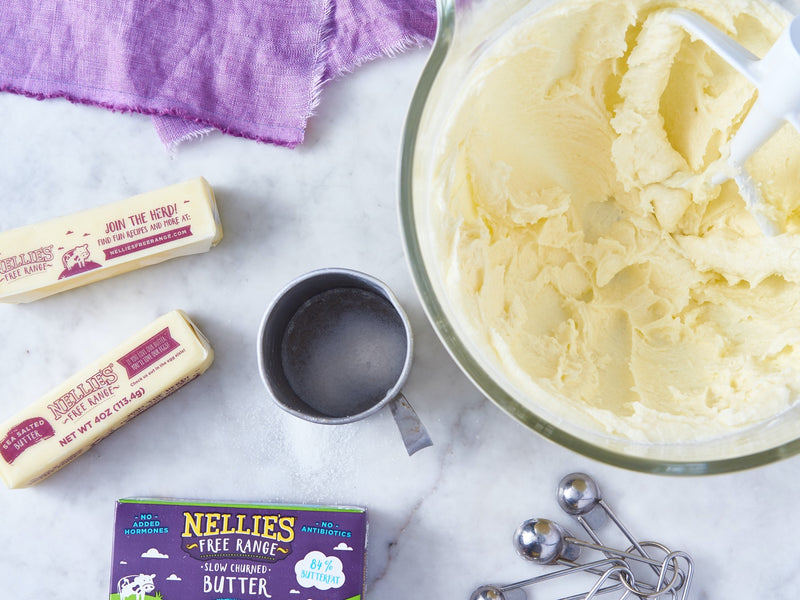
The ultimate creaming technique!
Found in the instructions section of most cookie and cake recipes, creaming butter and sugar is an important step in baking. "Creaming" refers to the process of incorporating sugar and softened butter into a uniform, fluffy, and smooth mixture in which the sugar is dissolved and evenly dispersed. Though it requires a hand or stand mixer, it's worth the extra effort for delightfully chewy cookies and finely crumbed cakes.
Why do I have to cream my butter and sugar?
Creaming butter and sugar before adding other ingredients like flour and eggs dissolves the sugar using the water contained within the butter, removing grittiness and ensuring that whatever you're baking will have the right texture. This process also beats air pockets into the butter, lightening the structure of the mixture. In a hot oven, those air bubbles will expand, giving your baked goods the proper height and rise. Eggs and flour can be easily overmixed, so taking the time to cream butter and sugar before adding other ingredients ensures that your batter or dough won't split or lose its structure.

How to cream butter and sugar
There are three key elements to perfectly creamed butter and sugar: an electric hand or stand mixer, softened butter, and patience.
Supplies:
- Softened butter
- Sugar
- An electric hand or stand mixer
- A large mixing bowl (or the bowl of a stand mixer)
Instructions:
- If using a stand mixer, install the paddle attachment and place your softened butter and sugar in the bowl. If using an electric hand mixer, place your softened butter and sugar in a large bowl.
- Begin to beat butter and sugar together on low speed until the two are mostly incorporated.
- Increase speed to medium-high and beat butter and sugar for 1-2 minutes, or until mixture is smooth, has lightened in color, and has significantly increased in volume. For best results, scrape down the sides and bottom of the bowl with a spatula at least once or twice before the creaming process is complete.
Tips and tricks for perfectly creamed butter and sugar
While creaming butter and sugar isn't a difficult process, there are a few things that can go wrong. Keep these tips and tricks in mind to avoid overmixing, undermixing, and a chunky or greasy mess!
- Always use butter that has come up to room temperature. Too cold, and you'll end up with a chunky, gritty mixture. Too soft or melted, and you'll end up with a greasy, deflated puddle.
- Cream until your mixture looks smooth, very pale yellow, and has noticeably increased in volume. If you don't cream for long enough, your mixture will appear gritty, yellow, and flat. If you cream for too long, the mixture will transition from smooth and voluminous to a greasy, separated, deflated puddle that sits at the bottom of the bowl.
- If you overmix your butter and sugar, start over. It's nearly impossible to come back from overmixed butter and sugar, so it's always best to just start a new batch.
- Use visual cues to determine when your butter and sugar have been properly creamed. Depending on the total amount of ingredients and the size and strength of your mixer, it may take you significantly more or less time to properly cream your butter and sugar, so pay more attention to visual cues than to timing for best results.










